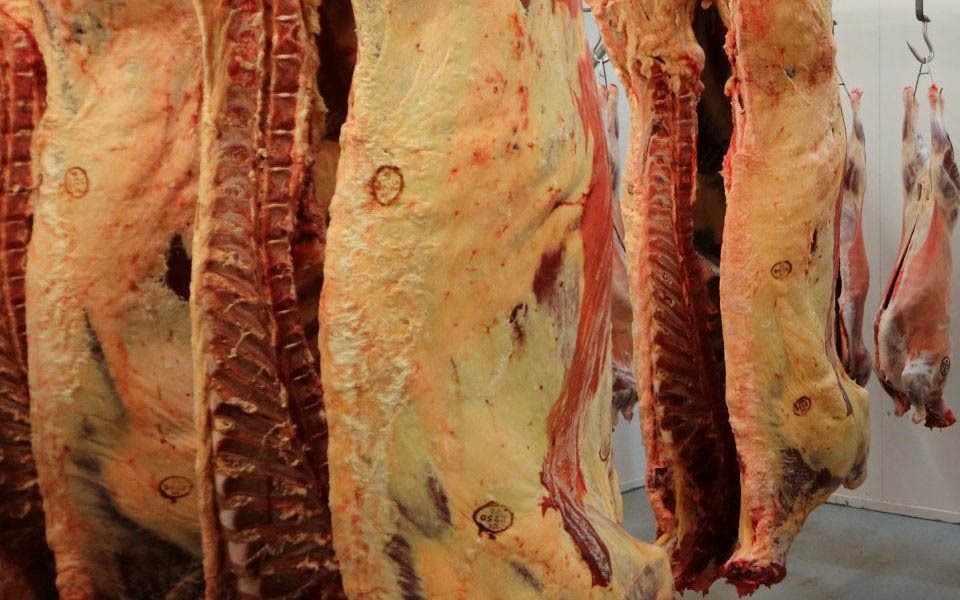The ‘less and better’ approach to meat and dairy is one way people can reduce the carbon footprint and environmental impact of what they eat.
But there is a growing obstacle in the supply chain for higher welfare, slower grown meat at a time when it should be becoming more accessible: the demise of the small abattoir.
Britain’s small abattoirs (defined as those slaughtering 300 – 5,000 animals a year) are rapidly disappearing from its food system, according to the Sustainable Food Trust, whose most recent estimate puts the number of small slaughterhouses at just over 100.
Reasons include the burden of regulation following things like food scares, rising costs and falling income. The effect of the closures, meanwhile, is wide-ranging across animal welfare, food miles and added costs to farmers.
One pig farmer in North Yorkshire, Peter Mawson, says his local abattoir recently ceased accepting pigs due to an update needed for its stunning tool.
The journey to the next slaughterhouse and back again is now almost double at three hours, “plus the joy of trying to cross and merge into morning traffic on the A64 dual carriageway with a farm truck and livestock trailer,” says Mawson.

One bad trip can taint the time and effort spent rearing an animal under even the most humane conditions, but increased anxiety in livestock affects the final product too – studies have long concluded that the muscles in animals under stress tense up, spoiling their texture and flavour.
Extended transportation is affecting those slightly further along the food chain. Owen Singer, a Somerset butcher who also farms pigs, points out the potential loss of the farm-to-table USP distinguishing his meat from that typical of a supermarket. “It doesn’t become very local if you’ve got to put your animals onto a lorry to Birmingham,” he says.
Singer is fortunate to have an abattoir he trusts within ten miles, though the one he formerly used, having closed last year, was even closer at a few hundred meters behind the shop. All too commonly, small abattoirs are victims of the red tape resulting from food scares, such as the mad cow disease of the nineties, because of the cost of resulting checks and regulations.
Hygiene regulations can be a major roadblock for small businesses – vet inspections alone can cost upwards of £2,000 a year. The plummet in the price for animal hides (abattoirs would receive £45 for a cow’s hide 20 years ago – only £1 today) hasn’t helped, nor has the fact that larger slaughterhouses, which supply supermarkets, can process high volumes of uniform livestock, meaning they can make savings due to economies of scale.

As National Food Strategy lead Henry Dimbleby points out, the decline of the small abattoir could also undermine the prospects of regenerative agriculture. At the moment, rare breed farmers – i.e. farmers of breeds better suited to the regenerative model – have little choice but to market their meat outside of mainstream supply chains.
Many larger abattoirs are reluctant to accept the small number of animals that regenerative farmers rear, and usually don’t take breeds seen as non-standard, where large or thick skins and woolly coats of heritage animals make processing more complicated.
Larger abattoirs may also not accept livestock older than usual slaughtering age, ruling out some farmers whose breeds take twice as long to mature than their more commercial counterparts.
“The challenge,” says Mark Driscoll, who runs food systems consultancy Tasting the Future, “is that the current market system promotes ‘big is better’. To survive in the marketplace, smaller abattoirs will need a government support package, and be seen as a public good. Otherwise it will be very difficult to scale up and support regenerative livestock.”
In the meantime, legislation has addressed worries around animals’ wellbeing, including compulsory CCTV at slaughterhouses and plans to force farmers to use only their nearest abattoir.
But government advisory body the All-Party Parliamentary Group for Animal Welfare (APGAW) says it hasn’t found evidence that extended transportation from farm to slaughterhouse heightens animal stress. Food miles and environmental consequences aside, it’s not so much the travel that concerns them.
What does perturb the committee is the management of lots of animals at once. “We’re not saying large abattoirs can’t meet welfare standards at all,” says Marisa Heath, strategic policy writer for the committee.

“But there are certain things large abattoirs could be better at,” she says. “They often use collection points so the animals will be taken to one place, taken off the vehicle, and then put on another one.
“And when they get into the abattoir they’re in a larger lairage, so they might be mixing among unfamiliar animals. Smaller abattoirs could provide higher welfare, but the actual process of slaughter seems pretty fair across the board.”
One option, which is supported by the Sustainable Food Trust, is moving the abattoir to the farm, but APGAW isn’t so sure mobile abattoirs are the ultimate answer. “There may be potential in siting them at livestock markets,” says Heath. “But the waste, hazard, and health implications make it very complicated and expensive to do, from what we’ve seen.”
An upcoming abattoir provision enquiry will reiterate to government the need for their funding.
That and better public recognition may be the best chance small abattoirs have of recovering from their losses.












0 Comments